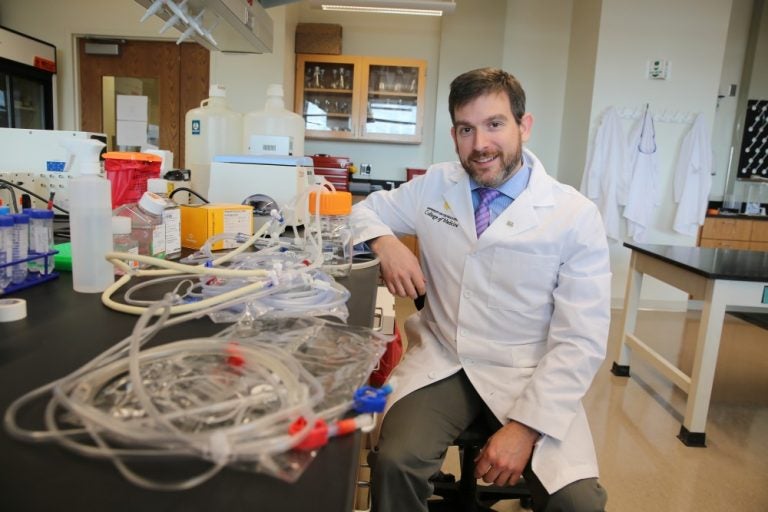A UCF College of Medicine researcher has designed a new mosquito surveillance tool that attracts the insects, diagnoses those carrying disease, and turns them a different color as a warning system to residents in at-risk areas throughout the world.
The project received a $100,000 Phase 1 Grand Challenges Explorations Grant from the Bill & Melinda Gates Foundation this week, the third in UCF history.
Mosquitoes are a serious health threat worldwide and carry illnesses like malaria, dengue and chikungunya. In Florida they have been known to transmit West Nile virus and cases of chikungunya are emerging in the state. A major challenge in fighting these diseases is creating a warning system to empower communities to take preventative measures. College of Medicine assistant scientist Bradley Willenberg, an engineer by training, has developed a new mosquito trap to do just that.
The trap would exude an odorous blend that is especially attractive to specific species of disease-carrying mosquitoes. Once inside the trap, the mosquito will encounter a wick-based device Willenberg helped invent. The wick would be soaked with a red-colored sugar water that mosquitoes love to consume. But the food also contains modified microscopic gold nanoparticles that will react to specific proteins found in a disease. If the mosquito carries the disease, as it feeds, its enlarging belly would turn from red to blue. Mosquitoes that don’t carry the disease would stay red. Insecticide would also be in the solution and would kill the insects within a matter of minutes. By looking in the trap, residents of at-risk areas would be able to see the colors of the dead mosquitoes and know if their community has disease-carrying species – without having to send the dead insects to a lab for analysis. The numbers of blue insects in the trap would indicate the seriousness of the infestation.
“Our goal is to provide a mosquito surveillance tool that attracts specific mosquito species and marks those carrying infectious human disease pathogens.” said Willenberg. “This novel trap can help everyday people readily identify their risks and protect themselves from mosquito-borne illnesses.”
Working with medical entomologists from the U.S. Department of Agriculture’s Agricultural Research Service Center for Medical Agricultural and Veterinary Entomology, Willenberg’s team will adapt and test exiting mosquito attractants to appeal to specific mosquito species. He is working with Sudipta Seal, UCF’s interim chair of the Materials Science and Engineering Department, director of UCF’s Advanced Materials Processing Analysis Center and NanoScience Technology Center. His team will provide the nanotechnology expertise and create nanostructures that will react to a specific disease protein present in infected mosquitoes.
Willenberg is also collaborating with University of Florida entomologists to test the new tool on mosquitoes infected with chikungunya. If successful, the technology could be easily adapted to mosquitoes carrying other illnesses, Willenberg said.
“This will be a significant advancement and another wonder in what nanotechnology can offer, and truly testifies to the power of interdisciplinary research,” Seal said.
A color “readout” of mosquito populations doesn’t currently exist. To determine if disease-carrying mosquitoes are in an area, they must be collected, taken back to a lab, ground up and analyzed using sophisticated molecular biology techniques to confirm they carry the pathogen.
When it comes to insects, the World Health Organization calls mosquitoes the “greatest menace” to public health, responsible for causing several million deaths and hundreds of millions of illnesses each year across the globe. Forty percent of the world population lives in areas where malaria is endemic and that mosquito-borne disease kills up to 2.7 million a year. Dengue sickens 20 million people a year. Chikungunya produces fever and joint pain that can be severe and debilitating.
The new wick-based devices are easy to use in the field because they have no moving parts and require no power; the wick and sugar water reservoirs are totally self-contained and protected from the environment.
Dr. Deborah German, vice president for medical affairs and founding dean of the College of Medicine, said the research and the Gates Foundation award show the power of partnership and innovation in solving healthcare problems worldwide. “When we bring together discoverers with diverse perspectives, we create innovative new ideas for the good of us all,” she said.
Willenberg joined UCF in 2014. He earned his Ph.D. from the University of Florida in biomedical engineering.
